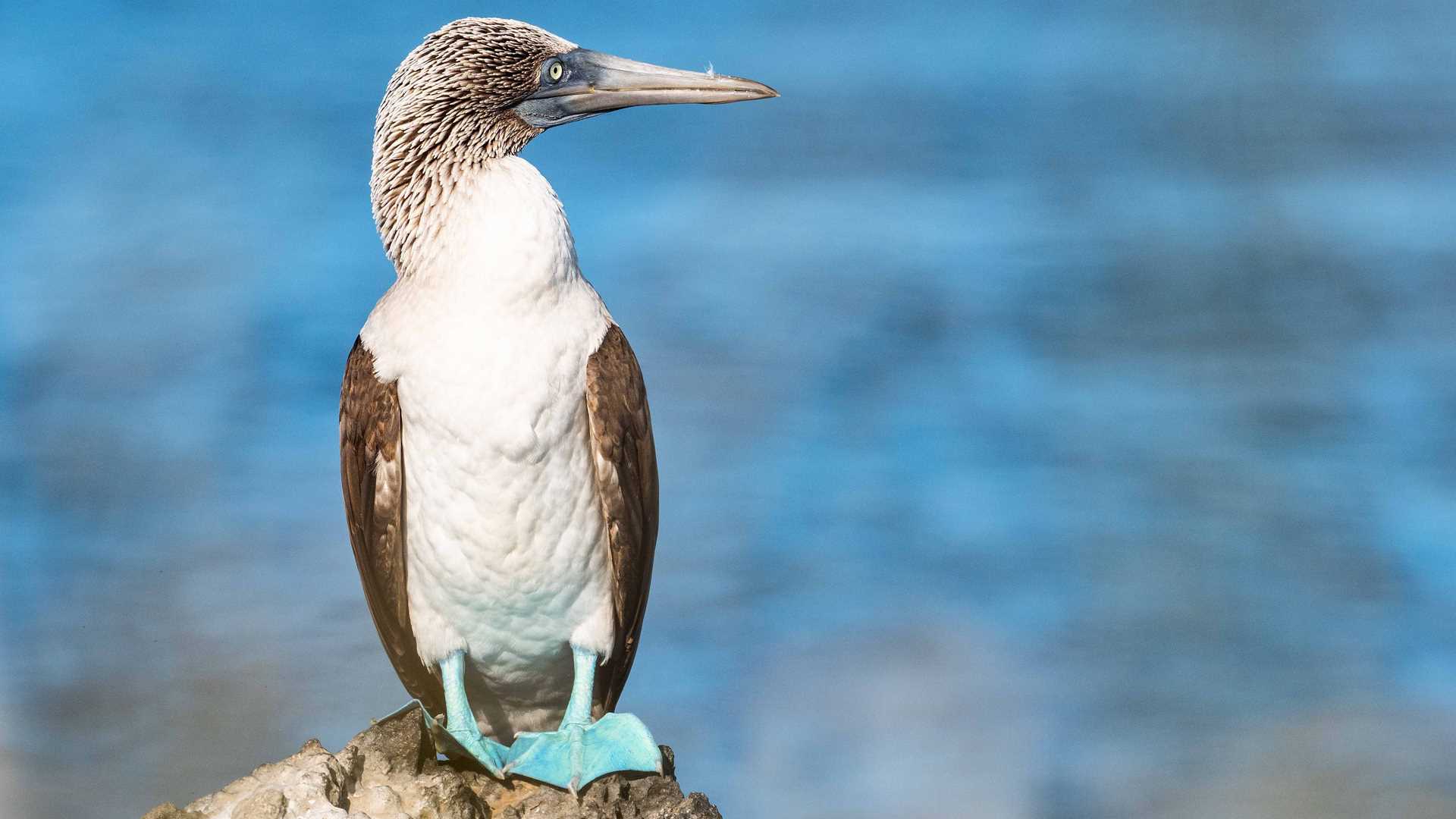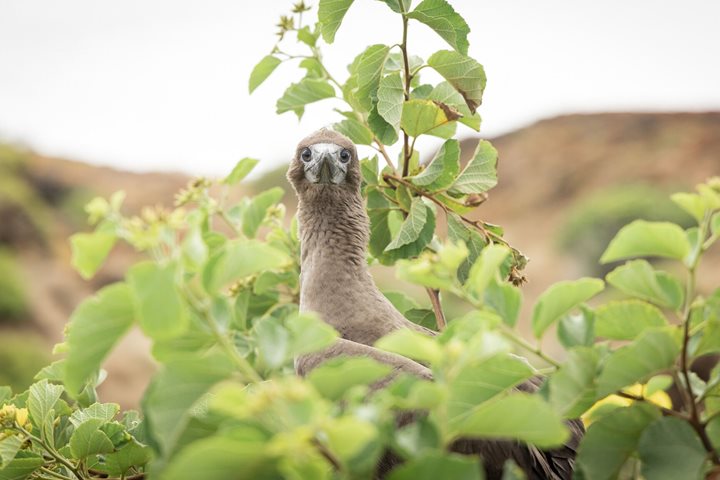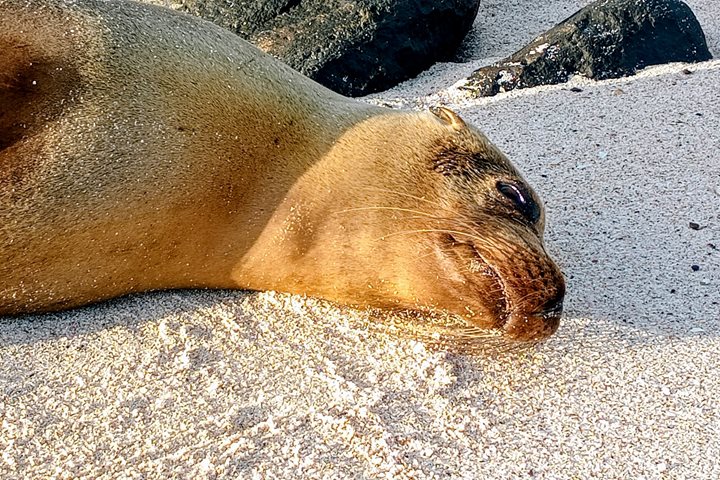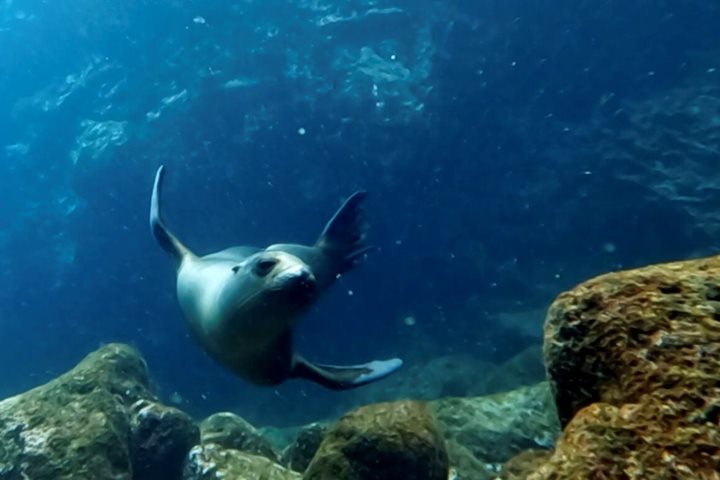What a wonderful day on Española Island!
This isolated island, located on the southeastern side of the Galapagos, is one of the oldest in the archipelago, geologically speaking. The volcanic landscape is breathtaking with high cliffs and white sand beaches.
Española is home for many species that are not only endemic to the Galapagos but endemic to the island. Española mockingbirds, Española lava lizards, Española marine iguanas, and the waved albatross are the most representative of the endemic species.
Early in the morning, National Geographic Islander II anchored at Gardner Bay. The spectacular pure white sand beach is beautiful. The sun was shining, and the Galapagos sea lions that call this paradise home rested near the aquamarine water.
In the afternoon, we visited Punta Suarez. We followed a long, rocky trail as we explored. Myriads of colorful marine iguanas and marine birds were seen everywhere. We admired and photographed blue-footed boobies and Nazca boobies. We had a wonderful surprise today, as well. We spotted a couple waved albatrosses, one of the most beautiful marine birds in the world. During the last week in December, these birds normally abandon the island to venture into the open ocean for several months. At sunset, we returned to the ship with our minds filled with so many memories. Our hearts were replenished by the much-needed tonic of wilderness. Galapagos always evokes wonder in its visitors.







